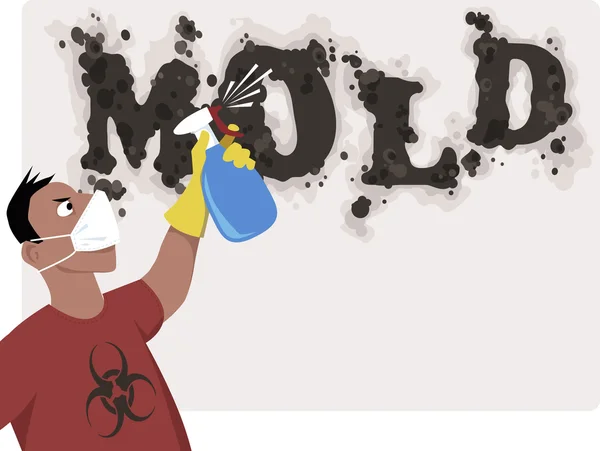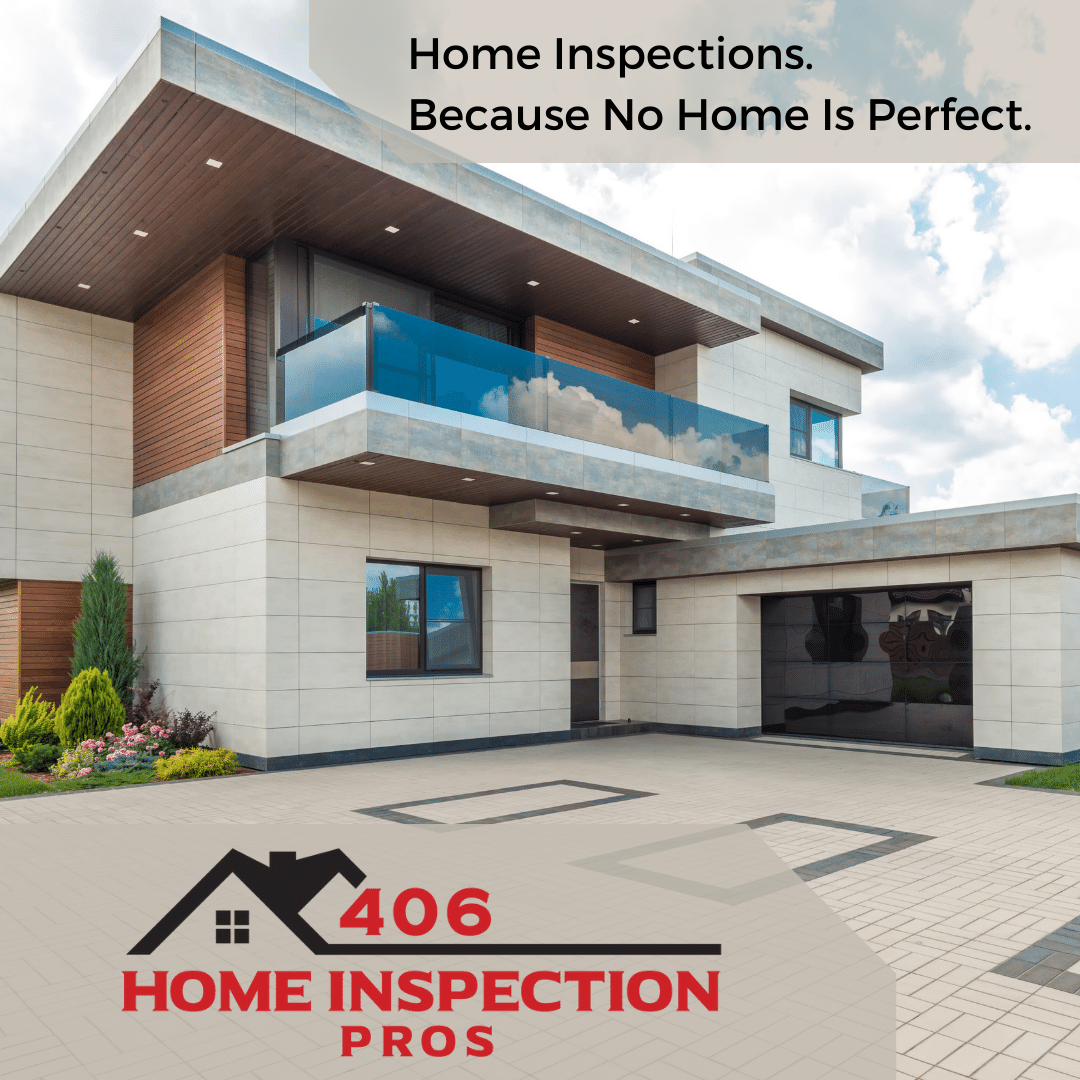
Let's Talk About Mold
Whether you want to call it yucky, blegh, or just plain gross, mold is not a fun topic, but if you are a tenant or homeowner, it is an important one. According to the Centers for Disease Control and Prevention, mold is a fungal growth that forms and spreads on various kinds of damp or decaying matter. Excess moisture is the primary cause of indoor mold, which reproduces by releasing tiny spores that float through the air and land in other locations. Settling on wet or moist surfaces, they can form new mold colonies.
No indoor space is completely free from mold spores. However, mold in residential property is a common and sometimes serious problem, causing various health issues including asthma, respiratory infections, breathing symptoms, and skin rashes, depending on the species.
You Control the Moisture, You Control the Mold
Since mold cannot be eradicated completely, steps should be taken to control it as much as possible by removing excess moisture. Simply wiping up visible mold, even with a bleach solution or other cleaner, will not eradicate it and does not address the cause of its growth.
If the excess moisture is caused by water vapor (think long, hot showers), mold is best controlled by running an exhaust fan for 10-20 minutes after showering and opening doors and windows. Exhaust fans are sized by CFM (cubic feet per minute) of air evacuation based on the room’s square footage. Home builders and contractors often undersize exhaust fans to reduce costs but you can easily check the CFM rating of your fan by taking off the cover; however, we only recommend this for homeowners. Tenants should contact the property manager.
If the excess moisture is caused by a broken or leaking pipe or a flood event, simply drying out the area is probably not sufficient. Homeowners should contact a mold remediation contractor or their insurance company immediately. Often a single flood event will require removing and replacing sheetrock, insulation, and treating or replacing subflooring and wall studs.
Be aware of the warning signs of mold -- visible mold, water damage, damp materials, or mold odor. If you are a tenant, you should alert your landlord immediately. Homeowners should contact a mold remediation contractor.
Mold Testing and Remediation
The presence of mold is tested by taking several air samples with specialized collection equipment in different areas of the home. Samples from the problem site are compared against the baseline samples in other areas and sent to a laboratory to test for elevated spore levels.
For property owners with confirmed findings of elevated mold levels, it is imperative to begin remediation immediately. Depending on the event causing the mold, the remediation may be covered by insurance. But even if not covered, failing to remediate mold will exacerbate problems and likely run afoul of Landlord-Tenant law regarding habitability of rental units.
Neither California nor Montana has state regulations about mold inspection, assessment, or remediation. However, contractors performing mold remediation repairs must be licensed by their respective states. Mold remediation contractors may also be trained and certified by private organizations that specialize in mold remediation.
This post was written by Andy Kucera, an owner of Valley Vista Properties, California licensed attorney, and real estate broker in California and Montana. Andy can be reached at andyk@valleyvistaproperties.com.
Home Inspections. Because No Home is Perfect.

Almost anyone who has bought or sold a home has either heard of or had a home inspection. Due to its importance in purchasing and selling real estate, we asked Robin Patrick, owner of 406 Home Inspection Pros in Flathead County, Montana (www.406hip.com), for his input. 406 HIP is InterNACHI certified and well-respected in the NW Montana service area.
Home Inspection Basics
The purpose of a home inspection is pretty straightforward. As a buyer, it is beneficial to know the condition of the property and the approximate cost of any potential repairs before committing to purchase. (Caveat: Home inspectors will not usually provide estimates of repair costs, but they will identify what repairs are necessary so you can obtain estimates from qualified contractors.)
A home inspection involves an inspection by a professional along with a written report of his or her findings. Home inspectors have extensive experience with home construction and systems and should always be certified by third-party associations. The cost can vary depending on the type and size of the home and the quality of the inspector.
Typically taking a few hours, the home inspector will perform a visual inspection of the home and test its systems. He may access the roof (or fly a drone to do so) as well as the attic, crawl space, and/or basement in addition to testing the electrical, plumbing, HVAC systems, appliances, and plumbing fixtures for proper operation. The written report usually includes photographs and written narrative of the types of construction and systems present, calling out any defects and health and safety issues.
How to Choose a Home Inspector
According to Robin, “The biggest thing to check is the reviews of the inspector and his/her experience. Inspections vary from inspector to inspector. Outside of getting registered with the state and meeting the requirements to do so, there is very little regulation. There are best practices that a good inspector will follow, and that is important. For example, the average home inspection from 406 Home Inspection Pros is 40-60 pages. This includes pictures and documentation of things that are working as well as things we find deficient. It’s important because things change, often rapidly, such as a heating system that was working at the time of the inspection but is not at closing. If it’s documented that there are thermal pictures of it producing heat, then it is expected to be working at closing, or it needs to be remedied.”
When to Get a Home Inspection
Home inspections are not just for prospective owner-occupying buyers to “kick the tires.” They are also very useful for investors purchasing income property and homeowners planning to move and sell or rent their primary residence.
For investors, a home inspection can help assemble accurate pro forma financials by estimating any repairs and/or improvements and the approximate time frames. For current owners planning to rent their primary residence, knowing what repairs and improvements to make before a tenant takes possession will increase the performance of the property as an investment.
For sellers of a property, obtaining a home inspection before listing a property is called a Pre-Listing Inspection. Robin states, “The pre-listing inspection provides sellers with upfront information about the condition of their property, which gives them more control over repairs and potentially strengthens their negotiating position. When issues are discovered during a pre-listing inspection, the seller can either have them fixed ahead of putting the home on the market or choose to disclose the issues to potential buyers. Generally, the home will sell faster and for more money than without it. The buyers may decide to get their own inspection, but a good pre-listing inspection should eliminate any big surprises. It ensures a smoother, more efficient transaction.”
What are the most common defects discovered during home inspections?
Robin advises “The most common items we find are usually water-related, whether stemming from improper water management, such as rain gutters or leaks. Mold is an easy frontrunner. Mold requires food, oxygen, and moisture. Most of the food comes from the building itself, such as wood and sheetrock paper. Oxygen is everywhere and almost impossible to control. Moisture is the easiest to control.
Next, we will find poor repairs that have caused other issues. These generally fall into two general categories, plumbing and electrical. Plumbing leaks can cause our number one item above -- water damage that can lead to rot and/or mold. Electrical issues are a big deal because they often leave behind safety issues, be it from electrical shock to a fire hazard.”
In summary, find a highly-rated and experienced home inspector and consult with your real estate agent or property manager about whether it makes sense for you to get a home inspection. It probably does.
This post was written by Andy Kucera in collaboration with Robin Patrick, owner of 406 Home Inspection Pros in Flathead County, Montana.
Andy Kucera is an owner of Valley Vista Properties and a California licensed attorney and real estate broker. He can be reached at andyk@valleyvistaproperties.com.
Let There Be Light (Bulbs)
Light bulbs are a seemingly but not-so-random issue in property management. As you learned in history, the light bulb was invented in 1879 by American inventor and businessman Thomas Alva Edison, although his path was partially paved by earlier inventors. Mr. Edison may be surprised at all of the light bulb options now available.
What’s it to me?
Here’s a little primer on light bulbs to brighten up your day.
Most property owners and managers ensure that residential rental properties have working light bulbs when a tenant takes possession. But when light bulbs burn out, most residential rental agreements require tenants to replace them. This is a valid exception to the owner’s obligation to maintain a habitable dwelling unit pursuant to CA Civil Code § 1941 et seq. because a burned-out light bulb does not make a dwelling unit uninhabitable (although it may make it very dark).
What if a light bulb burns out the day after a tenant takes possession? Well, everything works until it doesn’t. So that’s the tenant’s responsibility. (Although Valley Vista would probably make an accommodation in such a case.)
What about all of the light bulb options? There are various kinds of lighting options available. Most light bulbs currently sold in California for residential use are LEDs, or Light-Emitting Diodes. LED bulbs are cooler and more energy efficient than the incandescent type invented by Mr. Edison. They are also much more expensive. For owners, quality light fixtures with LED bulbs will last a very long time and are a good choice for rental homes. Many fixtures now integrate the LEDs so there is no bulb to replace -- when the fixture burns out (after approximately 10,000 hours of use), the fixture itself is replaced. We commonly recommend owners install these types of fixtures rather than keep replacing bulbs or ballasts in old fixtures.
The color spectrum of LED lighting affects the livability of your rental unit. A “warmer” bulb at 2700K, called “soft white,” is often used for living areas, while a “cooler” bulb at 2500K, called “bright white” or “cool white,” is often used for kitchens and bathrooms. The “K” refers to Degrees Kelvin which is a measure of color temperature. It’s also important for tenants to note that replacing a single bulb amongst others of a different color temperature will look quite different (and, quite possibly, fall short of your duty to return the property in substantially the same condition in which you received it).
A thought about dimmability (yes, that’s a real word)… If light bulbs are controlled via a dimmer switch (to control the brightness of the light), they need to be replaced with special LED bulbs marked as “dimmable” on the package. Not all LED bulbs are dimmable, and yes, the dimmable ones are more expensive. Installing a non-dimmable bulb on a circuit with a dimmer switch may cause the light bulb to flicker or blink, or not work at all.
As property managers, we have dealt with light bulbs for over 18 years. As part of our goal to work closely with our property owners to upgrade their rental homes over time, we encourage both our owners and tenants to call or email us if you have questions. We can’t promise that you’ll be enlightened, but we will do our best to resolve your lighting problems.
This post was written by Andy Kucera, an owner of Valley Vista and a California licensed attorney and real estate broker. Andy can be reached at andyk@vvpropmt.com.
VALLEY VISTA PROPERTIES







